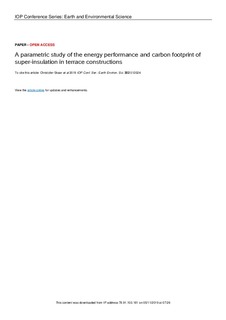| dc.description.abstract | Energy requirements for buildings are continually tightened, as seen in the ambitions to introduce near zero-energy building (nZEB) requirements in Norwegian and European building codes from 2020. One consequence of this is an increased use of insulation. However, standard insulation may cause challenges in many circumstances, for example where increased wall dimensions lead to reduced daylight levels or where increased insulation leads to increased floor height. Super-insulation materials are a possible solution to these challenges. Although several super-insulation products exist on the market, there is still a need for proven system solutions that provide the required level of insulation, along with reduced thickness in the constructions. An additional challenge is that these solutions should also be cost-effective and carbon-effective. The economic benefits should outweigh the costs and the carbon footprint should ideally be reduced, but at least not significantly increased.
To analyse the potential of super-insulation, we have performed a parametric case study of terrace constructions based on super-insulation and compared these with a baseline solution. The terrace construction uses vacuum insulation panels (VIP) as the main insulation. The top plate insulation is tapered mineral wool, aerogel is used in the edges and on top of the construction there are wood tiles. The parameters that have been varied are i) terrace dimensions, ii) width of the edge with non-combustible aerogel, iii) the thickness of the VIP layer, iii) the slope of the tapering, and iv) the heat conductivity of the VIP panels.
To evaluate the benefits of the super-insulation an analysis of energy performance in the use phase has been done. As the energy efficiency of the super-insulation solution is improved, this gain can be used either to reduce thickness or to increase energy performance. Both these will have an impact on the costs. To evaluate the environmental performance of the solution a screening LCA has been performed, with focus on the carbon footprint. The results of the case study show under which circumstances the super-insulation solution has better performance than the baseline, and vice versa. Key parameters that drive energy performance and carbon footprint are identified, providing suggestions for further research. | nb_NO |

